Veteran photos and military biographies – Honor Flight #54
Every North Country Honor Fight carries veterans with different military backgrounds. Flight #55 carried a dentist, bomb loaders, a ship-fitter/welder, a heavy equipment operator, a truck driver, a crane operator, a radio relay communications specialist, a military policeman, and aircraft hydraulics and ground equipment specialists. Some served for two or four years, while others served for twenty years or more. All their specialties, skills and sacrifices are necessary to keep us free. They should be proud of their service. The North country is proud of them and thanks them for their service.
The Peru Gazette photographed Honor Flight #54 Veterans before their Saturday, June 22, 2024, Send-Off Ceremony. Thanks to Janet Duprey for providing the biographies.
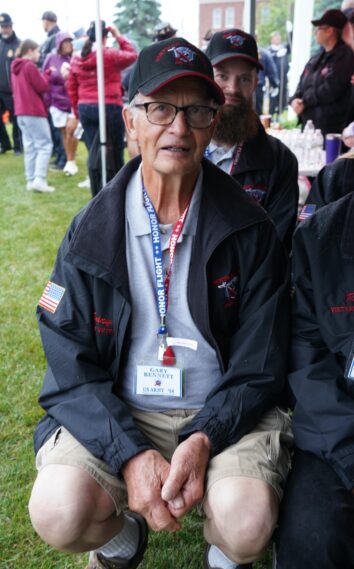 Gary Bennett, U.S. Army, 1964-1966 – Vietnam
Gary Bennett, U.S. Army, 1964-1966 – Vietnam
Gary had basic training at Fort Dix and AIT as a Personnel Radar Operator at Fort Riley. Assigned to Big Red One Infantry Division, Gary used an infrared telescope to detect movement and light up the night. The telescope was so bright he couldn’t see for a while after using it. Gary used 145 and 150 Howitzers and was an expert with the M-14 and M-16 rifles. Discharged, Gary missed the 3:00 a.m. bus, was escorted to the airport, and was asked to re-up. Response: “Are you crazy?”
Gary belongs to the Fort Covington American Legion, Massena VFW and is an Honor Guard at Brushton-Moira American Legion.
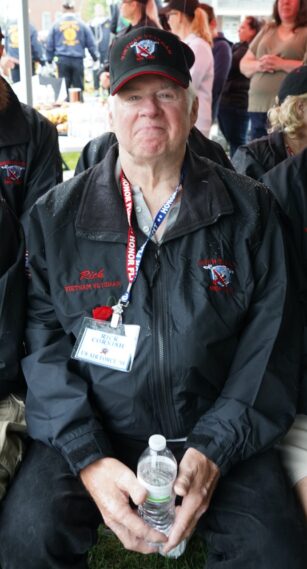 Ricky Cornish, U.S. Air Force, 1972-1979, 1981-1994 – Vietnam
Ricky Cornish, U.S. Air Force, 1972-1979, 1981-1994 – Vietnam
Rick enlisted and had basic training at Lackland Air Force Base. In Denver, Rick trained as an aircraft armor system mechanic and a ‘bomb loader.’ He was sent to Korea, where an advanced training group loaded flares, bombs, and rockets in the Sea of Japan. Stationed at Plattsburgh Air Force Base, Rick was a load crew member. He then trained crews and certified their proficiency. Rick left the Air Force, re-enlisted, and was sent to Griffiths Air Force Base and then to Lakenheath, England. Rick received many commendations for his 22 years of service. In retirement, he served as Commander and Senior Vice Commander at Post 309, Peru VFW.
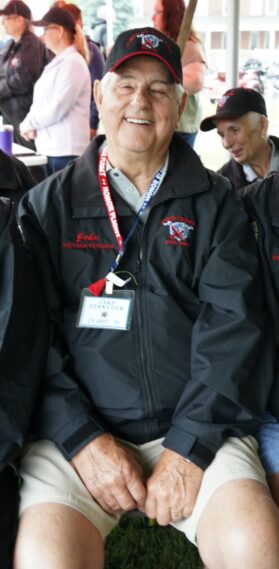 Jerome DeSnyder, U.S. Army, 1967-1970 – Vietnam
Jerome DeSnyder, U.S. Army, 1967-1970 – Vietnam
After graduating from dental school, Jake enlisted and was ordered to Okinawa. Married, Jake and his wife could live there, but they needed to buy a house. With no money, Jake put $6,800 on his credit card.
With a large medical clinic, Jake often went to missile sites with his dental equipment to treat the soldiers. They told the dentists to care for 200 MPs leaving for Vietnam as the USS Pueblo was captured. Troops returning to Okinawa needed more dental care in three years than in 15-20 years in private practice. Jake said, “I saw stuff in the hospital I never want to see again.
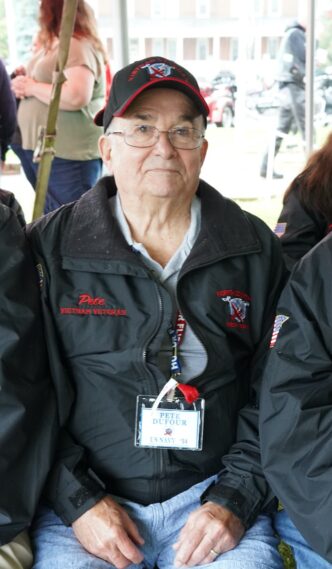 Joseph Peter Dufour, U.S. Navy, 1963-1967 – Vietnam
Joseph Peter Dufour, U.S. Navy, 1963-1967 – Vietnam
Pete had basic and AIT training at Great Lakes Naval Station. Pete was a ‘ship-fitter’ and welder. Pete had four tours to Vietnam on the USS Ticonderoga (CG -47) Aircraft Carrier, mostly in the Tonkin Gulf. Planes on the Ticonderoga provided air support and bombing runs over Vietnam. Pete was exposed to Agent Orange. In port, ships competed in blood draws. Pete’s Captain said they went on shore if they gave blood. Pete gave blood. Pete’s first daughter was born while he was in Vietnam waters. His best day was July 8, 1967, when he got out.
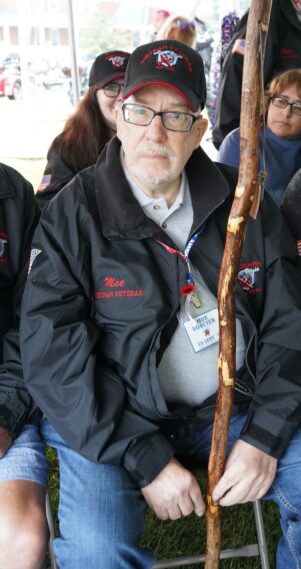 Maurice Forcier, U.S. Army, 1966-1969 – Vietnam
Maurice Forcier, U.S. Army, 1966-1969 – Vietnam
Enlisting to avoid the draft, a heart murmur kept Moe from joining the Air Force. Told the Army would take anyone, Moe trained at Fort Dix. Ordered to Daruk Province, Vietnam, Moe was a heavy equipment operator, handled explosives, and built roads and underground entrance roads with two 90-degree turns, preventing direct fire on our troops. Asked what he liked most in Vietnam, Moe said, “I survived and enjoyed camaraderie with fellow soldiers.” Moe was a close friend of Wesley Black, who passed away soon after he went on Honor Flight #34. Moe testified at the Montpellier Statehouse on the Burn Pit exposure issue.
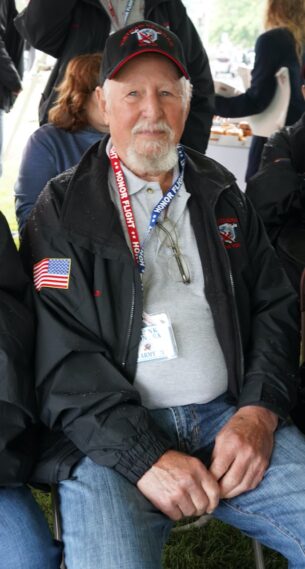 Francis Gonyea, U.S. Army 1964-1967 Vietnam
Francis Gonyea, U.S. Army 1964-1967 Vietnam
Frank’s grandmother signed his enlistment at age 17, saying he needed discipline. At Fort Dix, Frank trained as a truck driver. Frank delivered anything and everything: mail, laundry, stones, whatever was taking place. A spinal meningitis outbreak at Fort Ord sent Frank to Germany, where he handled ammunition and other supplies. Frank’s final position was driving the Battalion Commander. Frank had a car and a pass to leave the base. Soldiers paid him to drive them around Europe, so Frank got free trips. Frank said about his military experience, “I learned discipline.” Grandmothers know best!
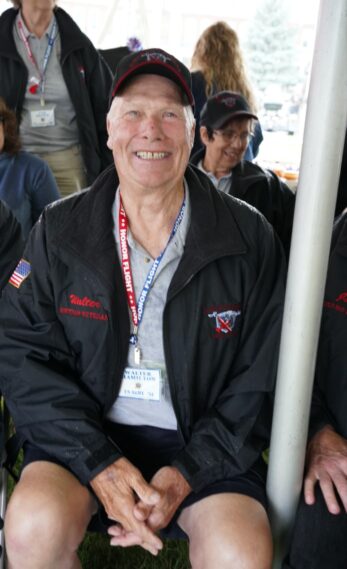 Walter Hamilton, U.S. Army, 1967-1968 – Vietnam
Walter Hamilton, U.S. Army, 1967-1968 – Vietnam
Walter had basic training at Fort Dix and AIT as a crane operator at Fort Leonard Wood. Sent to Vietnam, Walter traveled by shotgun on convoys with supplies, passing food and candy to children along the road. Walter said you appreciate what you have when you see how others live. Walter recalls snakes and spiders everywhere. Walter had one good Thanksgiving dinner, and then it was C-rations all over again. Called home due to the death of his father, Walter was discharged. Walter and his wife Carol are proud their two sons served in the Middle East.
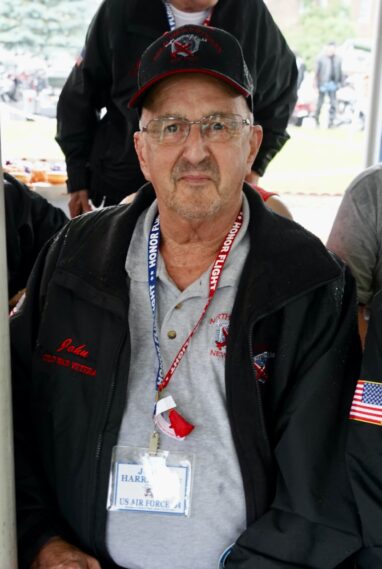 John Harrington, U.S. Air Force, 1976-1997 – Cold War
John Harrington, U.S. Air Force, 1976-1997 – Cold War
John had basic training at Lackland Air Force Base and AIT Radio Relay Communications at Keisler Air Force Base. Sent to Turkey as a Radio Operation and Microwave Communications, John returned stateside for AIT and returned to Turkey as a Maintenance and Radio Relay Communications. In Germany, John’s communications equipment was on wheels and easy to move. In the states, John performed maintenance on Missile Sites and as facility manager for Minute Man Missiles. John was really good at moving around to Wright-Patterson, Loring, MacDill, Chanute, Ellsworth, and Minot Air Force Bases. John received many commendations for his 21 years of military service.
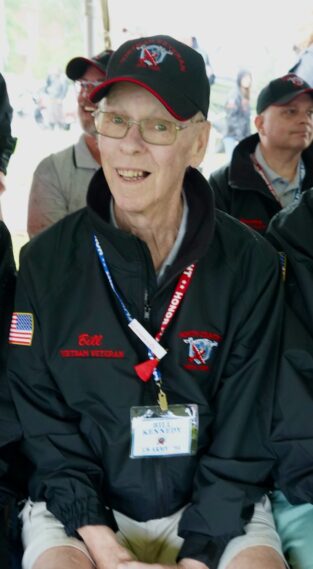 William Kennedy, U.S. Army, 1968-1971 – Vietnam
William Kennedy, U.S. Army, 1968-1971 – Vietnam
Bill enlisted, trained at Fort Dix, had AIT at Fort Monmouth and military police training at Fort Gordon. Sent to the New Jersey Coast, Bill had oversight of the “blue room,” observing activities should a missile need to be fired.
Assigned to Korea, Bill regularly flew to the DMZ with ammunition on a Chinook helicopter. Bill’s unit often visited a Korean orphanage to play and spend time with the children. Passing an older Korean man, Bill bought a small pepper, took a bite, and lost his breath as the old man laughed. Never again! When asked about Korea, Bill said it’s hot and rainy, except in January, when it’s very cold.
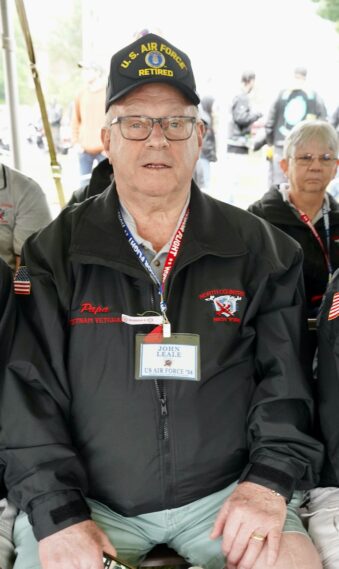 John Leale, U.S. Air Force, 1968-1988 – Vietnam
John Leale, U.S. Air Force, 1968-1988 – Vietnam
John trained at Lackland Air Force Base and trained at Chanute as an Aircraft Hydraulic Repairman. John joined the 380th Field Maintenance Squadron at Plattsburgh Air Force Base. Then John was sent to Clark in the Philippines. John spent four years in Hickman, Hawaii, which was an easy decision. At Seymour Johnson, John advanced to Aircraft Quality Control. Sent to Korea, John was the line supervisor. John returned to Plattsburgh as supervisor of the Hydraulic Shop. John said the best crews were in Plattsburgh. John received many medals and commendations for his 20 years of service to our Country.
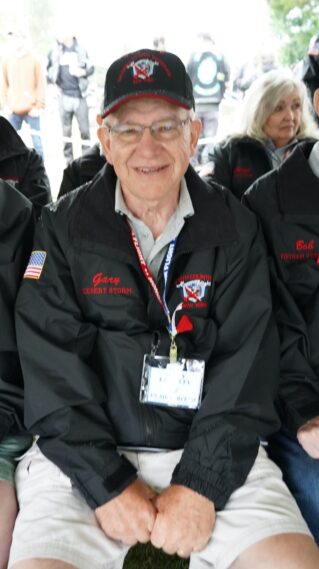 Gary Liberty, U.S. Air Force, 1974-1994 – Desert Storm
Gary Liberty, U.S. Air Force, 1974-1994 – Desert Storm
Six days after Gary and Julie married, he was at Lackland Air Force Base. In Denver, Gary trained as a bomb loader. Assigned to Plattsburgh Air Force Base, Gary went from loading bombs to maintaining nuclear stockpiles. In Turkey, they were told not to walk near housing but to walk around to the NCO Club. After a few drinks, Gary and a friend took the shortcut; a soldier dropped out of the tree with his gun pointed at them. Gary gave him a bourbon bottle; he took two swallows and let them walk away. Gary participated in Desert Shield/Desert Storm and retired at Plattsburgh. For his 20 years of service to our Country, Gary received the Kuwait Liberation Medal and several other awards.
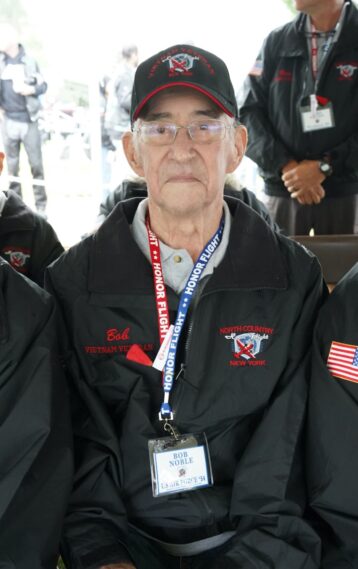 Robert Noble, U.S. Air Force, 1968-1989 – Vietnam
Robert Noble, U.S. Air Force, 1968-1989 – Vietnam
Bob had training at Lackland Air Force Base and AIT in Aerospace Ground Equipment (AGE) at Chanute. On to MacDill, where Bob said they delivered whatever was needed to work on the planes, and they lifted a plane off its wheels to test the components. Bob spent five years in Anchorage, Alaska and another year in Iceland. Bob’s final 13 years were at Plattsburgh Air Force Base. Asked about memories, Bob said he recalls going into NCO Clubs but doesn’t remember coming out! Bob received many commendations for his 21 years of military service.
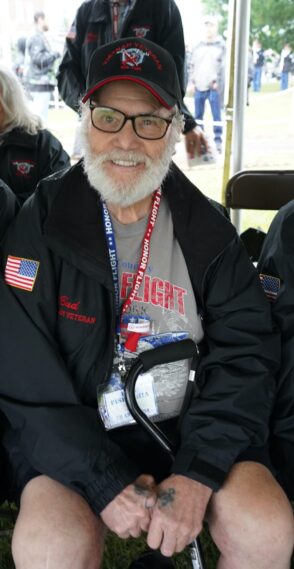 Joseph Piserchia, U.S. Army, 1966-1968 – Vietnam
Joseph Piserchia, U.S. Army, 1966-1968 – Vietnam
Bud was drafted and had basic training at Fort Dix. Sent to Blackstone, Bud became a food storage specialist. Bud drove forklifts and any equipment necessary to move food around. Bud was assigned to Korea, where he said he met the nicest people ever. The food was shipped in on cargo vessels and unloaded with Army supervision. A container door opened, and Bud climbed up on a forklift to close it as a Korean worker lowered the container, cutting off Joe’s toes on his right foot. Bud was told if he stayed in Korea for three more months, the Army would discharge him three months early. Bud stayed and got his early discharge.
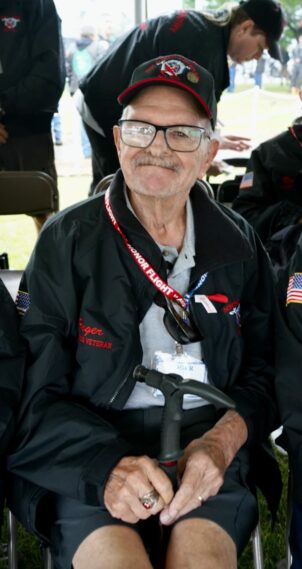 Roger Reil, U.S Army 1961-1964 – Vietnam
Roger Reil, U.S Army 1961-1964 – Vietnam
Roger enlisted and had basic training at Fort Dix and AIT at Fort Knox. Assigned to Germany, Roger joined the 30th Armored Division.
Playing baseball, a friend called Roger, who turned, was hit by the ball, breaking all his teeth. On midnight march, a soldier accidentally hit Roger with his M-1 rifle, breaking his teeth on the other side. Driving a personnel carrier, Roger got stuck, pinned between the truck and tank. The tank driver stopped in time to save Roger’s life. Later that day, Roger received a call his mother had passed. Spared, Roger’s father could have lost both his wife and son. Roger loved German beer, Octoberfest, and the girls he met.
Posted: June 24th, 2024 under City News, Community Events, General News, Northern NY News, Peru News, Peru/Regional History.
